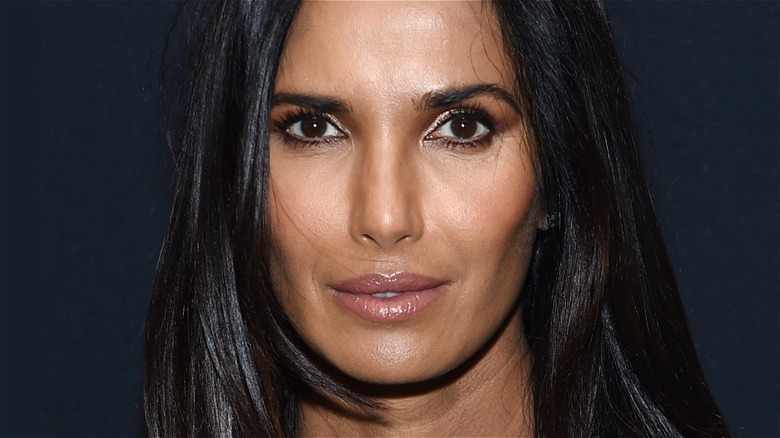Why You Probably Won't See Padma Lakshmi At A Michelin Star Restaurant
What began as a marketing idea in 1889 to entice people to travel via the newly invented automobile has become the equivalent of an "Academy Award" for restaurants. Once given away and used to prop up wobbly table legs, the high-brow "Michelin Guide" is now a soldout treasure map leading diners to the best restaurants and hotels in four continents and over 37 countries, with over 30 million books sold.
Brothers Andre and Edouard Michelin, founders of the eponymous automobile tire company, created their first "Michelin Guide" in 1900 to direct France's new drivers to the area's gas stations, mechanics, and popular rest stops like restaurants and hotels. The rating system used today, designating one to three stars, was implemented in 1931. Available in a growing number of select cities, fine dining establishments are anonymously critiqued on the "quality of products, mastery of flavor and cooking techniques, the personality of the chef represented in the dining experience, the value for money, and consistency between the inspectors' visits," per Escoffier. While only restaurants receive a Michelin-star, the head chef is credited with its success, and the award is often the first thing listed in their bios.
During the "Breaking Bread" segment at the 2022 New York Times Food Festival, television host Padma Lakshmi shared why she's no longer interested in dining at Michelin-starred restaurants despite being surrounded by the elite chefs she refers to by just their first names (Daniel, Eric, Dominique) and their food as a judge on "Top Chef."
Lakshmi is a street food aficionado
Mashed attended the New York Times Food Festival, where Food and Cooking editor Emily Weinstein spoke with the award-winning host of the food reality series, "Taste the Nation," Padma Lakshmi. Called "the joy of {her} life," Lakshmi's experience filming "Taste the Nation" harkens back to her childhood when she explored the city with her mother, dining on street food, "hunting for sugar cane in Spanish Harlem, or Chinatown for salted plum."
Given the option between a fancy multi-course tasting menu in one of the best restaurants or 'the best' authentic empanada from a Bronx bodega, Lakshmi "would go to the Bodega, nine days out of 10." It's the food of her childhood. Referring to herself as a "street food aficionado," Lakshmi feels more comfortable around the food she grew up eating. Aside from judging the food on "Top Chef," she rarely dines at Michelin-starred restaurants anymore.
Lakshmi's Hulu series has filmed 14 episodes with plans for a third season. "Taste the Nation" explores American cuisine and the immigrants that influenced it. From indigenous Americans to families that just arrived in the country, Lakshmi carries on in the tradition of Anthony Bourdain's "Parts Unknown" and Andrew Zimmern's "Bizarre Foods" by diving into how American food is the synergy created by many cultures and the diverse recipes from ancestral lands. "Taste the Nation" uncovers the "root and relationship between our food, our humanity and our history." In the process, the show broadens what being American means.

